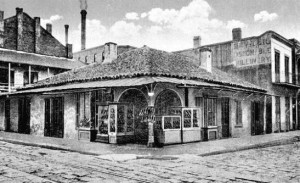Legend states the game of roulette was initially invented in 1655 by French scientist Blaise Pascal. Some claim roulette, coming from the french word for small wheel, was initially an attempt at making a perpetual motion machine and eventually morphed into a game of chance. Others claim that the wheel was simply a form of entertainment for the isolated monk. Whatever the case, the numbered wheel and ball soon took a noted place in European gambling.
Some claim roulette, coming from the french word for small wheel, was initially an attempt at making a perpetual motion machine and eventually morphed into a game of chance. Others claim that the wheel was simply a form of entertainment for the isolated monk. Whatever the case, the numbered wheel and ball soon took a noted place in European gambling.
The game was initially played in Paris and had spread through Europe by 1745, when the first document specifically banning the game was released by king George II. The games Roly-Poly, Ace of Hearts, and E.O., which many claim are predecessors of roulette, were similarly banned. As is often the case, however, this only added to their popularity, and far from dying out, the game thrived.
Roulette was brought to America with the first casino, which was opened by the French in New Orleans in 1800.
 The game gained in popularity, slowly spreading upward along the Mississippi river. In America particularly, the game evolved to have a streamlined roulette betting table and a more tamper-proof wheel, as it was a popular back room game. This fast and streamlined game eventually became the more popular layout for casinos around the world, as it provides a clear and concise way to place bets as the wheel spins.
The game gained in popularity, slowly spreading upward along the Mississippi river. In America particularly, the game evolved to have a streamlined roulette betting table and a more tamper-proof wheel, as it was a popular back room game. This fast and streamlined game eventually became the more popular layout for casinos around the world, as it provides a clear and concise way to place bets as the wheel spins.
The game itself has stayed much the same over the years, with the exception of the zeros. In the 1790s, zero and double zero were colored red and black respectively. These squares were later changed to green to make them clearer. Some German wheels held only the single zero, while early American boards included zero, double zero, and the eagle, which was a win for the house. Eventually the eagle fell out of favor, returning to the single or double zero boards.
Gambling was banned in 1860s in Germany, which resulted in roulette and other similar games moving predominantly to Monte Carlo in that area of the world. The single zero wheel predominated there, while the double zero remained popular throughout America. The gambling facilities in Monte Carlo, unlike the backroom gambling common in America, were designed to be more stately and luxurious for the wealthy of Europe. This led to a slower and less streamlined game, which eventually fell out of use in favor of the faster paced American version.
The modern roulette wheel features a double zero in the United States, South America, Canada, and the Caribbean, while casinos in other locations favor the single zero wheel. The odds on the Americanized wheel are therefore slightly more in favor of the house.

